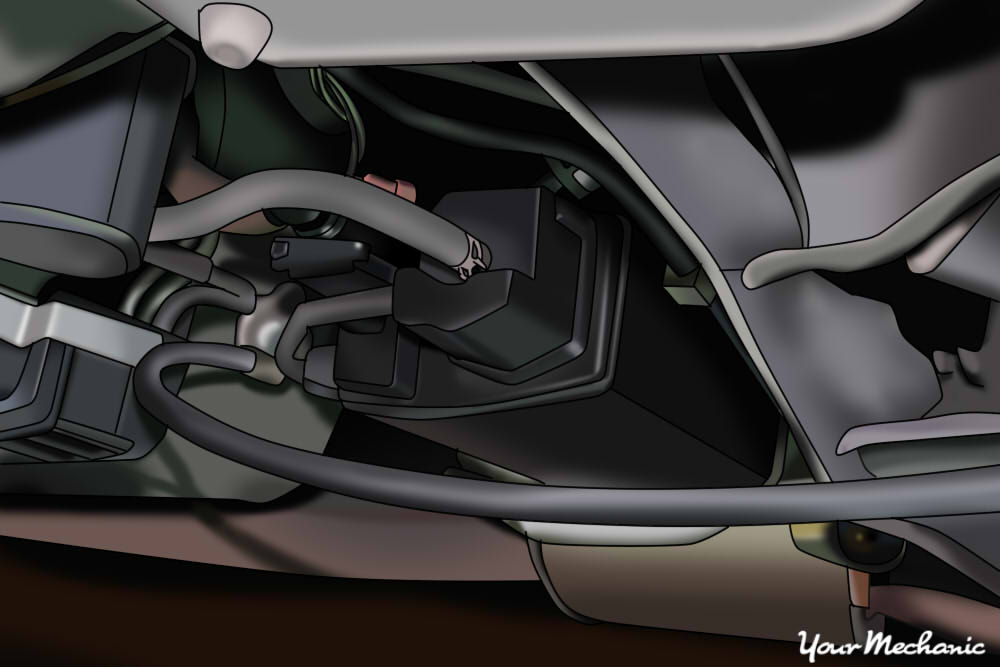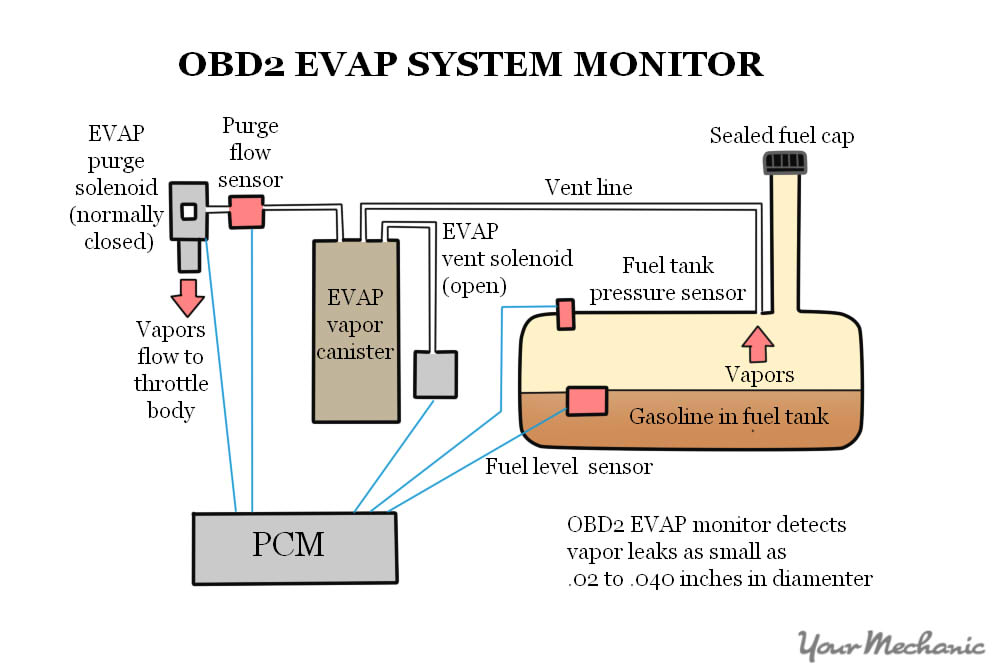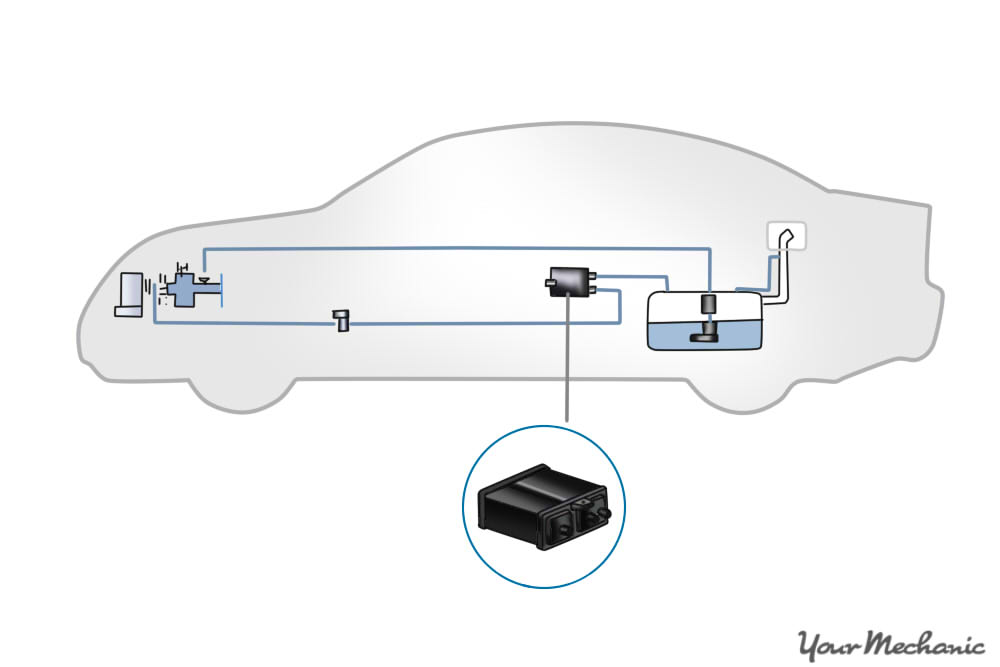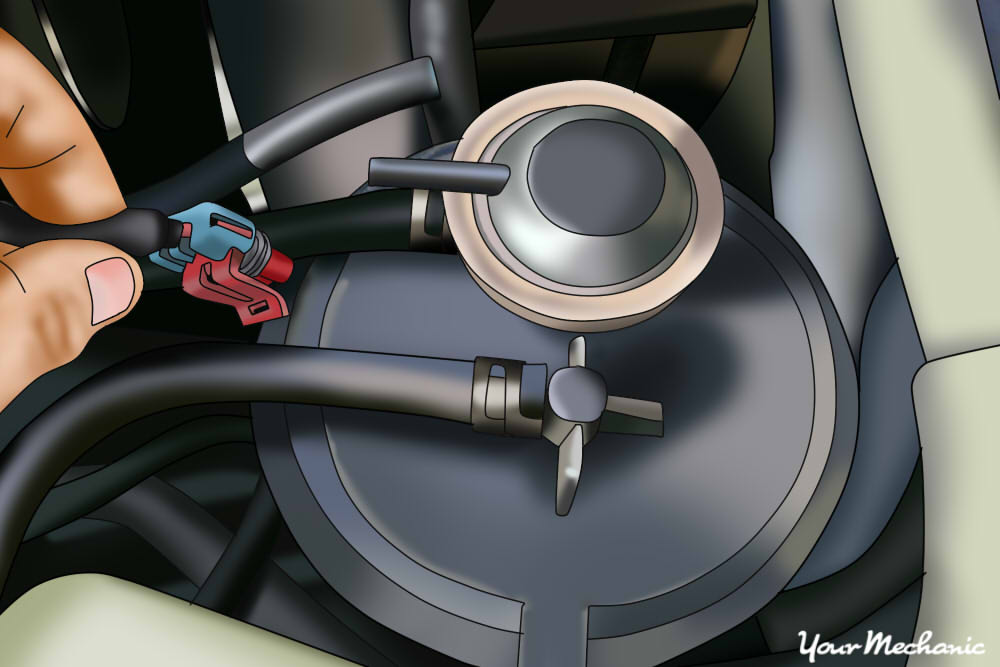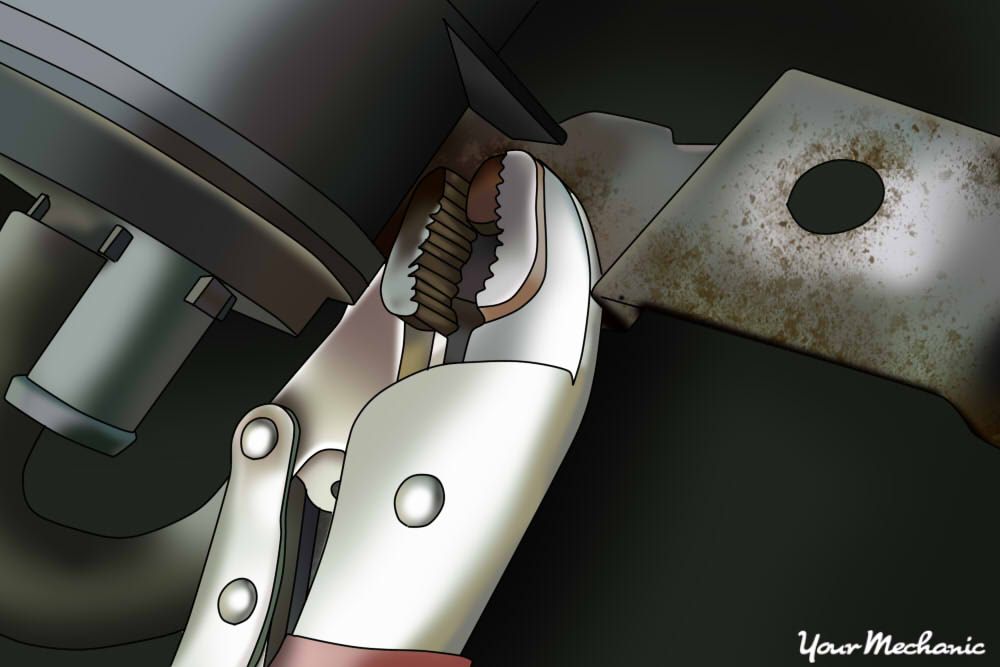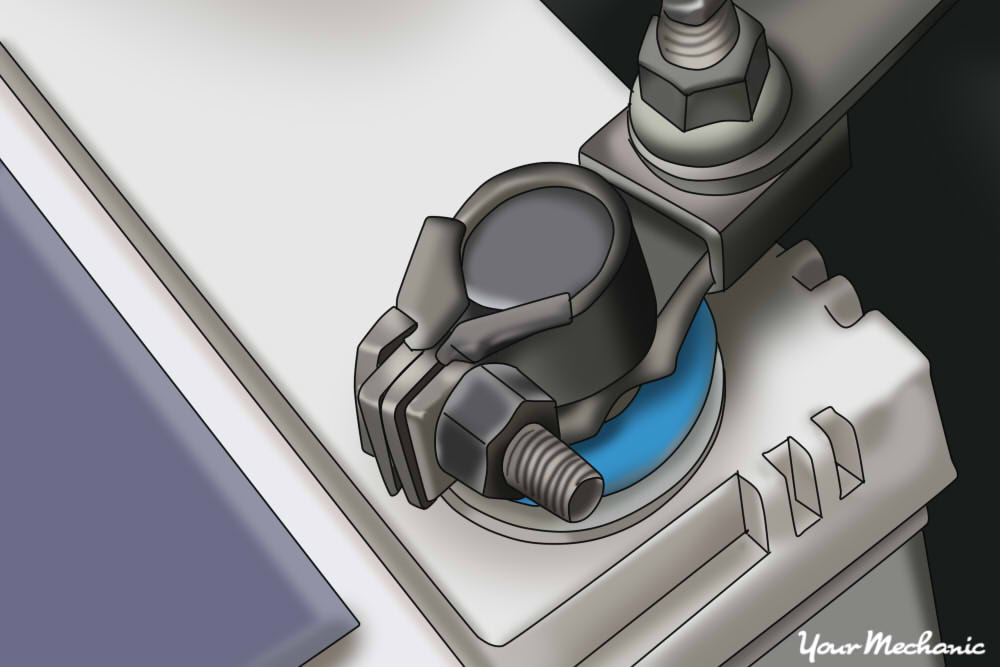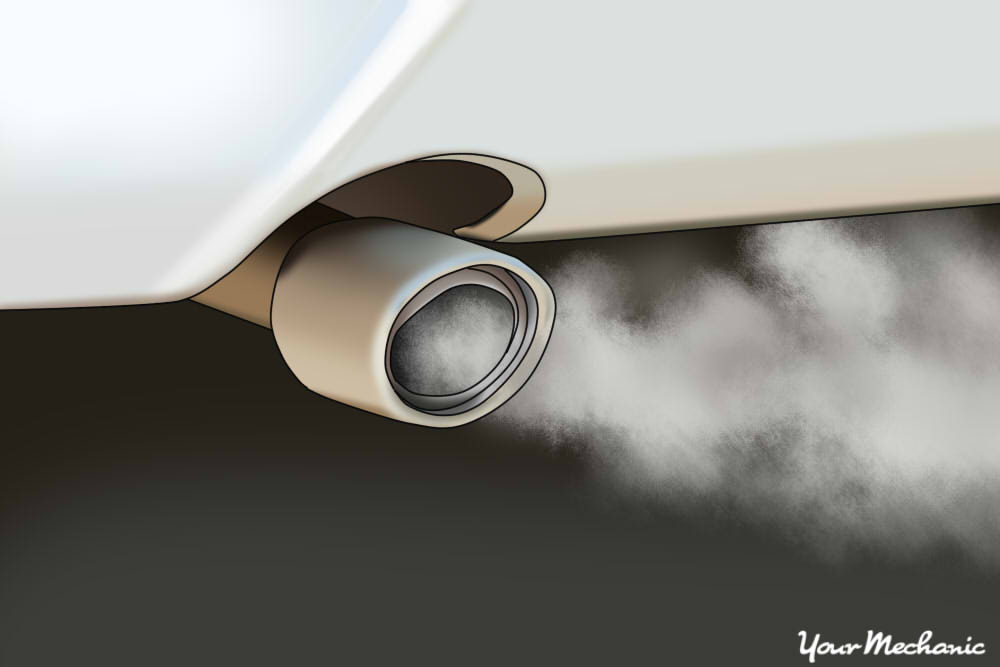

Keeping the air we breathe as clean as possible is the primary reason why today's vehicles have emissions control devices attached. The truth is that most fuels emit vapors that are not only dangerous for our environment, but when frequently inhaled can lead to several respiratory conditions including Chronic Obstructive Pulmonary Disease (COPD).
In an effort to reduce harmful emissions coming from unburnt fuel, a series of emissions control filters are installed within the vehicle's fuel system to remove potentially harmful hydrocarbons and to improve fuel efficiency inside the combustion chamber of the vehicle's engine. The component that filters most of the unburnt vapor that collects inside the fuel tank is the evaporative emissions control canister.
The evaporative emissions control canister is attached to a fuel hose that is connected to the fuel cell. The vapor or gases from the fuel cell enters the EVAP emissions control canister and is circulated through a system of charcoal filters. Once the vapor enters the canister, two gases are converted. The first includes hydrocarbon, which is re-distributed through the EVAP purge solenoid into the fuel system and is burnt during the combustion process. The secondary gas that is emitted from the EVAP emissions canister is carbon dioxide, which is exited from the tank by the EVAP vent solenoid and is distributed to the outside air.
Over a period of time, dirt, debris, and dust start to build inside the emission control canister and typically impacts the operation of valves and vent solenoids that work in conjunction with the canister. If this occurs, it will render the EVAP system useless, which may result in emissions testing failure, Check Engine Light staying on, and in some cases, the engine being unable to start due to excess vacuum pressure inside the fuel cell.
When the EVAP emissions canister fails it triggers an OBD-II error code (0499) collected by the vehicle's ECM and tells a mechanic that there is a pressure problem with the EVAP system. If the EVAP canister is damaged or not working properly, it needs to be replaced, as it can't be serviced or repaired on the vehicle.
- Note: For purposes of this article, we will discuss the steps for removing and replacing the EVAP emissions control canister that is located in the back of the vehicle or on the front of the vehicle. Always refer to your vehicle's service manual for exact instructions and location of the EVAP vent solenoid.
- Warning: Replacing the EVAP emissions control canister will require you to raise your vehicle on a hydraulic lift or with jacks and jack stands. It will also require you to remove power from the battery. Make sure to remove the positive and negative terminals from the battery before touching any components or removing any parts.
Part 1 of 3: Determining the symptoms of a bad EVAP emissions control canister
Quite often, a problem with the EVAP system or emissions control system is electrical in nature or with sensors that monitor this system. In some cases, a problem with the EVAP canister will trigger an OBD-II error code (P-0499) that indicates a pressure problem with the EVAP system. There are a few warning signs that might also indicate that a problem with the EVAP emissions control canister exists including the following:
Check Engine Light displays on dash: When there is a problem with the EVAP emissions control canister, the Check Engine Light will display on the dash. When a pressure issue is detected or excess vacuum is discovered in the fuel cell, the ECM detects the issue and triggers the Check Engine Light to come on. This light needs to be reset after replacing the EVAP emissions control canister if that is the source of the error code.
Excess pressure inside the fuel cell: When the EVAP canister becomes clogged or the charcoal inside the filter gets saturated with too much moisture (which is caused by excess water in the gasoline), the filter stops collecting vapor from within the fuel cell. This causes excess pressure to build in the fuel tank leading to reduced fuel pressure, too much fuel pressure and, in some cases, broken fuel lines or seals on the fuel cell. This activity triggers the Check Engine Light and other fuel system warning indicators.
Fuel tank gauge doesn't work: Sometimes when there is excess pressure inside the fuel cell, the fuel tank gauge displays inaccurate information. This may indicate that there is a problem with the EVAP canister, which should be inspected by an ASE certified mechanic.
A failed emissions test: The EVAP canister is a critical component of emissions testing. If the canister is not working efficiently, it can cause a vehicle to fail an emissions test.
Part 2 of 3: Replacing the EVAP emissions control canister
As we indicated above, there are commonly two different locations for the EVAP emissions control canister, near the fuel cell and inside the engine compartment. Since the exact location of this component is unique to the vehicle you're working on, it is highly recommended to purchase a service manual for the specific make, model and year of vehicle you're servicing. The service manual typically gives you the exact location of the EVAP canister along with specific replacement steps as recommended by the engineers that created these vehicles.
Materials Needed
- Boxed end wrench or ratchet wrench
- Flashlight
- Flathead screwdriver
- Jack
- Jack stands or hydraulic lift
- Penetrating oil
- Replacement EVAP emissions control canister
- Replacement vent hoses
Tip: Make sure to wear safety glasses during all phases of this project as the potential for debris falling into your eyes is high when working underneath a vehicle.
Warning: If you review the information above or the steps below and have determined that this job is too complex or beyond your comfort level, please do not attempt to replace the EVAP vent solenoid. One of our local ASE certified mechanics will be happy to assist you.
Step 1: Disconnect the vehicle's battery. Locate the vehicle's battery and disconnect the positive and negative battery cables before proceeding.
The EVAP canister is attached to an electrical harness.
Step 2: Raise the rear of the vehicle. The EVAP emissions control canister is located on the driver side, near the rear tires.
Jack up the vehicle from the recommended jack placement and place the rear of the vehicle on jack stands for support. Make sure to keep pressure on the jack after lowering the vehicle onto the jack stands for extra safety.
Step 3: Locate the EVAP canister. On most domestic and foreign vehicles sold in the US, the EVAP emissions canister is located next to the fuel cell.
It is shaped in a rectangular or spherical design and has three vapor lines attached to it. One line attaches to the fuel cell, one to the EVAP purge solenoid and one to the EVAP vent solenoid. There is also an electrical harness attached to this canister.
Step 4: Lubricate the bolts and slots with penetrating fluid. To avoid stripping bolts, spray penetrating fluid onto the bolts and the clips that hold the EVAP canister onto the vehicle.
Since this part has been exposed to road grime, water and, in some cases, salt; it's probable that the bolts have rusted. Spraying them with penetrating oil will reduce the potential of stripping these bolts and save you a lot of time and frustration.
Step 5: Remove the electrical harness. Once you've sprayed the bolts with penetrating oil, let that soak in for a while.
In the meantime, you'll notice that the EVAP canister has an electrical harness attached to the unit. Remove this harness by inserting a small, flat blade screwdriver into a slot that contains a small plastic clip. Lower the clip with the screwdriver and carefully remove the electrical harness from the EVAP canister.
- Tip: On some canisters there will not be an electrical harness. However, there should be a sensor or other electrical wire attached for monitoring the unit. Remove as instructed in your vehicle service manual.
Step 6: Remove vent hoses from the EVAP canister. As described above, there are typically three hoses attached to the canister: the EVAP vent solenoid, the fuel cell, and the EVAP purge solenoid.
Remove all three of these hoses and clearly mark which hose attaches to the specific male fitting on the EVAP emissions control canister. Do this by using masking tape and marking descriptions on the tape, then wrapping tape on each hose.
Step 7: Remove the bolt(s) holding the EVAP emissions control canister. The EVAP emissions control canister is attached to a bracket in two ways.
First, there are two bolts that secure the canister to a bracket. On some vehicles, a secondary set of clips secures the canister to the vehicle's undercarriage. There are commonly one or two bolts. Remove these bolts using a ratchet, extension and a 10mm socket (in most cases it will be a 10mm).
Step 8: Remove EVAP canister from the clips (if applicable). In many cases this part is attached to a series of clips on the backside.
You can gain access to these clips after you remove the bolts. Using a flat blade screwdriver, carefully depress on the clip and slide the EVAP emissions canister off the bracket.
Step 9: Remove the old EVAP emissions control canister. Once all wires, hoses, and clips have been removed, the canister should easily come off.
Remove the old canister and inspect it for any corrosion, holes or burn marks that may have contributed to failure.
Step 10: Install the new EVAP emissions control canister. The installation of this component is an exact reversal to the removal.
Prior to installing the new canister, inspect the condition of the vent hoses. If they are worn, cracked or are showing signs of age, replace them.
Step 11: Attach bolts and clips. Slide the EVAP canister onto support clips (if applicable) and attach the EVAP canister to the bracket with the bolts.
Step 12: Reattach vent hose and electrical harness. Anything that was removed should be reinstalled as before.
Step 13: Clean up underneath vehicle. Before you finish the job, make sure to remove all tools, debris, and hardware from under the vehicle to avoid running over them with your vehicle.
Step 14: Lower vehicle from jack stands.
Step 15: Reconnect battery cables. Tighten the cable with a wrench.
Part 3 of 3: Test driving the vehicle
A test drive for this repair is actually very short, due to the fact that in many cases, the failure of this part will show up at idle or start up. However, before you complete the test drive, it's important to start the vehicle and clear any error codes that previously were downloaded. This will give you a "clean slate" in which to test the new EVAP emissions control canister.
Step 1: Start the vehicle. Let it warm up to operating temperature.
Step 2: Check the dashboard to verify that the Check Engine Light does not come on. If it does, you should shut the vehicle off and complete a diagnostic scan.
The error codes have to be cleared on most vehicles after completing this service.
Step 3: Shut off the vehicle. After verifying that the check engine or other lights are gone, shut the vehicle off.
If error codes continue to display, recheck your connections to the canister as it's possible that the vent lines are installed incorrectly.
Step 4: Take the vehicle on a 10 mile road test. Return home and verify that the Check Engine Light does not illuminate.
This job is fairly simple to complete; however, since you're working with the EVAP system and fuel system, there may be a few complex steps. If you've read these instructions and still don't feel 100% confident in completing this repair, please contact one of YourMechanic’s local ASE certified mechanics to complete the evaporative emissions control canister replacement for you.



